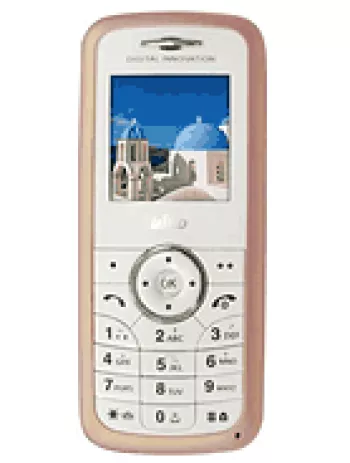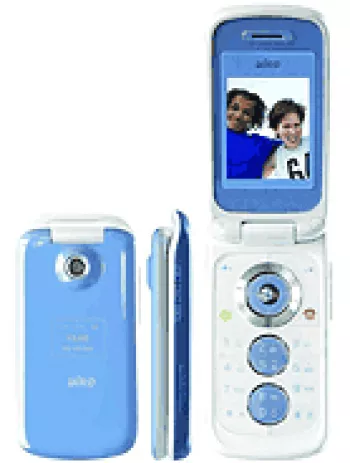
Overview of Bird D615
The Bird D615, announced in 2007, is a feature phone that was once a compact device representing a balance between functionality and simplicity. Although it has been discontinued, this device has left an indelible mark on the market during its time of release. It was part of a lineage of phones aimed at users who required straightforward communication tools rather than the sophisticated, multi-functional smartphones that we see today.
Design and Build
The Bird D615 sports a sleek and simple design with dimensions of 105 x 45.6 x 12.2 mm and a weight of just 82 grams. This lightweight nature made it convenient for everyday carry and use. The phone was available in two appealing colors: Soft-touch Grey and Shining Blue, ensuring a professional look suitable for any occasion.
Display
The device features a 1.8-inch TFT display with a resolution of 128 x 160 pixels, offering fairly decent visibility for its time. The screen supports 65K colors which was standard, providing users with a satisfactory visual experience for basic usage like calls, messaging, and navigating the menu.
Camera
The Bird D615 is equipped with a single 1.3 MP main camera, which allows users to capture basic photos. The presence of video recording capability, though limited, was a bonus at the time of its release, offering users the opportunity to record moments albeit in modest quality.
Memory and Storage
This phone comes with an internal storage capacity of 60MB, which could be further expanded via a dedicated microSD card slot. This feature was particularly beneficial for users looking to store more contacts, messages, and multimedia files. The phonebook capacity of the Bird D615 was ample, allowing users to store a significant amount of contact information.
Battery Life
Powered by a removable Li-Ion 650 mAh battery, the Bird D615 offered users reliable power for daily use. With a standby time of up to 140 hours and a talk time of up to 4 hours, it was well-suited for users who demanded longevity from their mobile devices. This battery capability reduced frequent charging needs which were appreciated by the users of that era.
Network and Connectivity
Network Support
The Bird D615 supported GSM 900 and 1800 bands, facilitating basic mobile communications. GPRS Class 12 was included for data applications, though EDGE support was notably absent.
Connectivity
Wireless connectivity options included Bluetooth, which allowed users to share data over short distances with compatible devices. Also, it featured FM radio, enabling users to enjoy music and news broadcasts from various FM stations. For wired connections, it utilized a proprietary USB, a typical feature of phones from that time, which served both data transfer and charging purposes.
Sound and Features
The sound system of Bird D615 included a loudspeaker for hands-free calling and music playback. It provided a range of alert types including vibration, downloadable polyphonic, and MP3 ringtones, offering personalization to some extent. An absence of a 3.5mm jack was a drawback for some users who desired higher quality audio experiences through headphones.
Operating System and User Interface
The Bird D615 is categorized as a feature phone, providing a user interface centered on simplicity and essential phone features. The device supported multiple languages, including Chinese, English, French, Spanish, Portuguese, and Hindi, making it versatile for a global market. Basic messaging formats such as SMS, EMS, and MMS were supported along with a WAP 2.0 browser for limited web functionality.
Additional Features
The phone also included a set of preloaded games, adding entertainment value for users. Java MIDP 2.0 support allowed for the installation of additional applications and games, enhancing the utility of the device despite its hardware constraints.
Conclusion
The Bird D615 remains a testament to the mobile technology of its time, characterized by practical design and core functionalities rather than advanced features. It served the needs of users looking for a reliable and straightforward device without the complexities of modern smartphones. As technology continues to evolve, the Bird D615 stands as a nostalgic reminder of a simpler era in mobile communication.
Key Features of Bird D615
- Compact and lightweight design weighing only 82 g.
- TFT display with 65K colors.
- Expandable memory via microSD card slot.
- 1.3 MP main camera with video recording capability.
- FM radio support for on-the-go entertainment.
- Connectivity with Bluetooth for wireless communication.
- Supports SMS, EMS, and MMS messaging.
- Java support with MIDP 2.0 for running Java applications.
- Removable 650 mAh battery providing up to 4 hours of talk time.
Bird D615 Key Disadvantages
- Lacks 3G, 4G, and 5G network support - only GSM available.
- No EDGE support for faster data transmission.
- The device has been discontinued, which may affect availability of parts and support.
- Very limited screen size of 1.8 inches with low resolution (128 x 160 pixels).
- No front-facing selfie camera available.
- Absence of a 3.5mm headphone jack limits audio accessory options.
- No WLAN (WiFi) capability, limiting internet connectivity options.
- No built-in GPS or positioning feature.
- Uses a proprietary USB connection instead of the more common and versatile standards.
- Small battery capacity of 650 mAh, which may result in short usage times.
View Also
More Phones
All Rights Reserved +14267 Phones © Mobilawy 2025

























